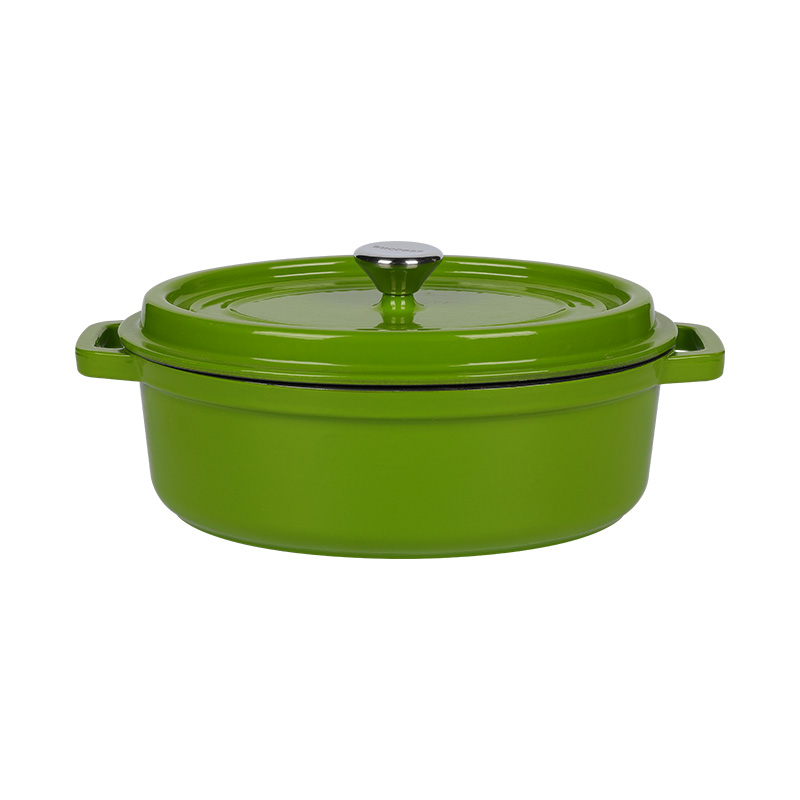In modern kitchens, the interaction between cookware and cooking surfaces is a key factor for consistent results. Using a Cast Iron Pan On Induction Cooktop offers a unique approach to managing heat during everyday cooking. Unlike traditional pans, the iron structure of the pan responds steadily to induction technology, allowing cooks to maintain a controlled temperature with less guesswork. This combination is particularly helpful for dishes that require even cooking across the surface, such as seared vegetables or fried proteins.

An iron deep frying pan paired with an induction cooktop creates a practical setup for home chefs. The heavy base of the pan distributes heat uniformly, less hot spots and helping to prevent uneven browning. For meals that demand a long cooking time, such as slow-fried onions or caramelized sauces, this setup provides stability without frequent adjustments. Users often notice that food retains more consistent texture, highlighting the benefit of combining iron cookware with modern induction surfaces.
Cooking with a Cast Iron Pan On Induction Cooktop also reduces the effort spent on temperature monitoring. Induction technology quickly responds to changes in power settings, and the pan’s mass maintains a steady heat even when the cooktop’s output fluctuates slightly. This is particularly valuable when preparing fried dishes, as the iron deep frying pan holds its temperature well, reducing the likelihood of oil cooling too fast or burning. For home cooks, this feature adds confidence when trying new recipes or experimenting with cooking methods.
Beyond practical performance, a Cast Iron Pan On Induction Cooktop provides versatility in meal preparation. Many cooks appreciate the pan’s ability to transition from stovetop to oven, which expands cooking options. For example, a seared piece of meat in the iron deep frying pan can be finished in the oven without transferring to another dish, preserving flavors and reducing cleanup. The combination also supports various techniques, from shallow frying to gentle simmering, offering flexibility preciously found in lighter cookware.
Another advantage of using a Cast Iron Pan On Induction Cooktop is the efficiency it brings to energy use. Iron pans retain heat longer than thinner alternatives, meaning the cooktop does not need to remain at high power continuously. This results in a steadier cooking process and can lower overall energy consumption. When frying with an iron deep frying pan, the retained heat ensures that food cooks evenly without repeatedly increasing the cooktop’s setting, which also less temperature swings that might affect delicate ingredients.
Maintenance of a Cast Iron Pan On Induction Cooktop setup is straightforward when proper care is taken. Regular seasoning of the pan prevents sticking and enhances the natural non-stick qualities over time. Even though the pan is heavy, its durable nature allows it to withstand frequent use on induction surfaces. The iron deep frying pan develops a naturally smooth cooking surface that improves with each meal, making it a long-term companion in the kitchen.
The tactile experience of cooking with a Cast Iron Pan On Induction Cooktop is hard to replicate. The pan’s weight provides a sense of control, while the responsive heat distribution allows cooks to adjust techniques intuitively. Fried foods achieve a desirable crust in the iron deep frying pan, and sauces benefit from gentle, uniform heat. Together, they demonstrate how combining traditional materials with modern cooktop technology can improve the rhythm and quality of home cooking.
Using a Cast Iron Pan On Induction Cooktop simplifies heat management and expands culinary possibilities. The iron deep frying pan adds consistency, versatility, and durability, making it a valuable tool for those who enjoy exploring cooking techniques. This combination enhances both efficiency and outcomes, proving that thoughtful cookware choice can significantly impact everyday kitchen experiences.



